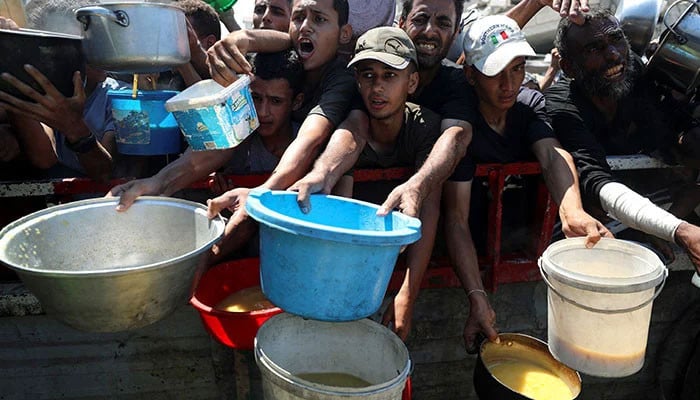Israel has imposed man-made starvation on the population of Gaza since the aggression against the enclave began in October 2023. This campaign intensified drastically after March 2025, when the Zionist occupation implemented even harsher restrictions on the already scarce aid allowed into Gaza. Since then, hundreds of men, women, and children have died from severe malnutrition. Doctors survive on meagre crumbs of bread and oil each day, often resorting to seawater to ingest much-needed electrolytes. Journalists have become too weak to carry out their duties, and men are too frail to risk their lives at GHF sites. The population now resembles skin stretched taut over bones.
Such severe malnutrition has, unfortunately, been witnessed throughout history, and its effects on the human body are well documented. Systems shut down one by one, fatigue envelops the victims, and the body begins to consume itself to death. Chilling accounts between 1920 and 1940 in the Soviet Union paint a similar picture. Performers collapsed mid-performance, dying where they stood. People dropped dead in the streets as if simply falling asleep. Desperation reached such extremes that court records tell of a mother dismembering her unconscious husband, believing him dead, to feed their children.
What is often overlooked, however, is that recovery from starvation can be just as devastating. Ironically, one of the earliest recorded accounts of this phenomenon comes from the siege of Jerusalem in 70 CE. For five months, under the command of Titus, son of Emperor Vespasian, the Roman army cut off all aid to the then-holy Jewish city. Like Gaza’s population today, Jerusalem’s citizens were wasted, disease-ridden, and forced to eat leather. After the Romans breached the gates and captured the city, Flavius Josephus, a Jewish commander who defected to the Romans, reported that many survivors died soon after eating. Malnourished citizens would gorge themselves on food to the point of vomiting, with many dying within hours.
Following World War II, similar accounts emerged involving Japanese prisoners of war. Malnourished soldiers liberated from captivity in the Philippines, New Guinea, and elsewhere gorged themselves on calorically rich food provided by their liberators. Approximately one in five of these prisoners died because of this refeeding process. Medical examinations revealed shrunken organs, heart failure, and other severe complications. Comparable observations have been reported repeatedly in starved civilian populations after famine relief, among post-operative patients, individuals suffering from anorexia nervosa, and chronic alcoholics.
Now commonly known as refeeding syndrome, this condition describes a dangerously rapid metabolic shift from a catabolic to an anabolic state. In starvation, the body suppresses insulin and relies on breaking down muscle and fat, depleting essential intracellular ions. Once feeding resumes, insulin surges, causing glucose and electrolytes to flood into cells. This sudden cellular shift sharply lowers blood levels of phosphate, potassium, and magnesium. Insulin also promotes sodium and water retention in the bloodstream, leading to fluid overload. If untreated, these changes can cause catastrophic damage to the heart, lungs, nerves, and blood, resulting in arrhythmias, respiratory failure, and death.
Excerpted: ‘Food alone won’t save Gaza’s starving population’. Courtesy: Aljazeera.com
